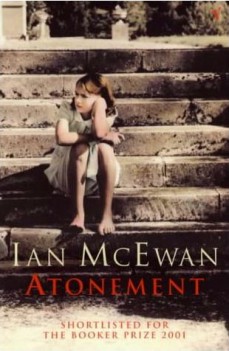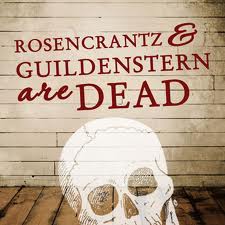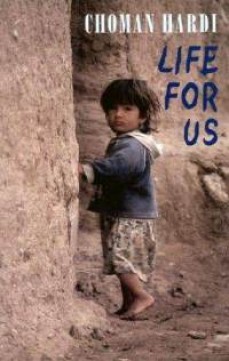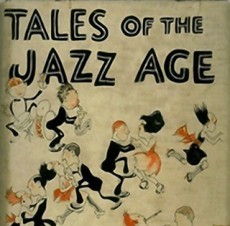Endings
Our first order of business should be to issue the inevitable spoiler alert; predominantly the extracts we have chosen are situated at the very end of their original texts and some might view giving the ending of a story away as literary sacrilege. However, we should like to contest this by pointing out that many canonical works seem to share the common characteristics of ambiguity. Furthermore literature is often measured by its undecidability and its ability to open itself up to multiple readings; this is, after all, why they can be returned to countless times after having been read from cover to cover. Therefore, although plot retains its importance, the role of providing entertainment through surprising or thrilling readers by gradually revealing textual occurrences is, perhaps, slightly dissolved. More intriguing is the manner in which textual occurrences help shape the overall meaning of the piece rather than how they perform as narratorial stepping-stones in advancing the plot. Bearing this in mind, one could argue that even though this anthology might expose readers to what happens at the end of a text, readers will still be able to enjoy and locate more meanings when they go on and explore the full texts being treated in this anthology.
Furthermore, the experimental aspect of this project emerges precisely from the fact that we present our texts isolated from the body of text, which rests behind and has various effects on how they would be naturally read; it is an experiment with the structural conception of endings. Indeed, the ending of a text can be viewed as a synthesis, combining all the information the reader has received beforehand in order to provide a satisfactory conclusion. It was revealed during the process of surveying multiple texts however, that this assumption becomes slightly undermined when the ambiguity that occasions the endings of many acclaimed works of fiction is considered. In such instances the reader is cast into a vast sea of possible meanings; satisfaction derived from the confluence of all narratorial strands is denied, and in its place meaningful, thought provoking questions abound.
With this anthology, we hope to show the many different faces of the ending and demonstrate how the concept refuses to be shackled to one rigid and singular definition. This lack of a clear-cut definition is in fact one of the many things that make investigating endings such an appealing prospect. On the one hand, it symbolizes just that: an end, or a definitive ending point with no continuation of the plot. On the other, especially in relation to readership, the ending can spark or imply something further, and in many cases will depart from the conventions of the satisfying ending that neatly ties all the loose ends together for us. Thus, paradoxically, the ending also becomes a starting point.
Despite the fact that our anthology predominantly involves English speaking extracts, there is a measure of variety in the fact that we have included texts, spanning from the late 19th Century to today, as well as from Kurdish exile poetry to Hollywood feature films. Readers will therefore be able to trace the similarities and differences between the endings included through several literary periods and cultures. The online format of the anthology also lends itself to the presentation of a more varied collection of works, as we have been able to include not only text based extracts but audiovisual material as well. Hence, the diverse nature of endings does not solely occur through the different ways in which different ideas are addressed thematically. We may also observe how the endings function within their own specific medium. The theme of the ending thus demands more exploration, and by this we were prompted to include prose, poetry, a play and a film, ensuring a rich and varied selection.
Torn between the desire to be representative in order to do justice to our organising principle, and the brevity demanded by our allocation of only six spots, we encountered another obstacle that this introduction must address. Representing virtually every text ever written containing a beginning, middle, and end is practically impossible, and so with this in mind we decided that in order to further substantiate the extracts that would ultimately make the final anthology, it was important that they deal with themes thoroughly linked to the concept of endings.
Although issues surrounding the ambiguous and complex nature of the ending runs like a red thread through our chosen extracts, other noticeable themes were unearthed once we stood back to assess what we had collected. Most immediately striking was the theme of death, which for self-explanatory reasons has much to do with the human condition, and its close association with the theme of the end. This was not initially a criterion while the extracts were being chosen, but nonetheless emerged a dominant theme and conveys the indomitable grip death holds over the concerns of the world of the living.
The duality of the definite end and speculative continuity here becomes increasingly apparent as death to some extent appears to symbolize the ultimate ending, whilst simultaneously symbolizing a new beginning if perceived as a merely transitional stage. With perception being so integral to these considerations, it is inevitable that different authors through different mediums seem to approach the theme of death in different ways. Apart from revealing something about the texts, the different treatments of the issue reveals something about the contexts in which they arise, as well as about their audiences. In some ways, the endings expand beyond texts themselves. After a book is closed, the credits roll, or the curtain falls; the reader or viewer is left alone with their thoughts, which may spring far beyond the content of the story. To emphasise this, it seems suitable to briefly address the question of adaptations, since the adaptation is a prime example of how the ending may plant an idea that will grow into something completely different. Nearly all of the texts are, or have been adapted, and in order to keep a wide spectrum of texts, we have chosen to include both adaptations as well as the original versions.
The idea of the adaptation and the constructed ending are addressed within the stories as well, as many of the extracts show that endings are not necessarily formed naturally. On the contrary, it is sometimes the case that us as individuals or characters within a piece of fiction help forge them. This is especially showcased in Atonement, Big Fish and Heart of Darkness, where the characters involved take matters into their own hands, and literally attempt to fabricate their own endings to create a satisfactory one. Sometimes we appear to be unable to accept the ending for what it is, and it may be that this is both a blessing and a curse. The manner in which we observe endings cannot be entirely separated from the observed concept itself, especially when this perception compels us to interfere with or ask questions of them.
With the idea of the constructed ending in mind, what affects the reader most is how they respond emotionally after a narrative ends, and what they create with the pieces of information that they have been provided. There are different kinds of endings, which generate different responses within the reader. Even though endings are unique, and dependent on individual interpretations, it seems to be an innate part of the human nature to seek patterns and signs that leads to categorization and structure. Thus, a few archetypal endings appear to be at play in our anthology. The spectrum is wide. At the one end of it we find the romanticized ending often associated with Hollywood films, and on the other, the more angst-ridden kind of endings that imply a continuing sense of turmoil.
Belonging to the latter camp, Heart of Darkness inhabits a sphere of pessimism, angst and turmoil. Parallel lines are drawn between the lightness and relief inspired by satisfactory, though neatly tailored, endings and the overbearing and oppressive weight attached to endings that fail to provide contained conclusions. Certain texts that we have selected also demonstrate how interlinked universal themes such as endings and death can become with the artistic genre in which it is being examined. Perhaps the strongest basis for the inclusion of Rosencrantz and Guildenstern Are Dead is that it deconstructs formal traditions of endings within the genre of Tragedy, as well as exploring the theme of death. In a sense, as the accompanying commentary we have produced hopes to show, it is also an analysis of the implications of endings in its own right.
Unlike the theme of death, we did not expect to find the re-occurring image of water throughout several of the texts. Water is a charged and powerful metaphor, and is a tool that authors frequently seem to utilize in order to create a memorable ending. It brings together the ideas of life, death, continuity and closure. Furthermore, this is something that is very applicable to the construction of the ending, since an aura of duality surrounds the element. This tension is particularly prominent in Big Fish where the borders between life and death are blurred by the use of water as a metaphor. In Heart of Darkness it also conveys a sense of ambiguity since the sea is allowed to symbolize the openness of the end. The usage of water could be seen as a way in which the endings refer to a beginning. Life is believed to have begun in water, and simultaneously, water also carries spiritual and mythical connotations, showcasing its complexity. The unexpected re-occurrence of water further enhances that the end is something worth investigating. It exemplifies how certain themes and methods are able to stand the test of time whilst others fade away.
In terms of Big Fish the idea of returning to the beginning is metaphorical, but in The Curious Case of Benjamin Button the literal image of the end returning to the beginning is realised. This is a sentiment that the poem ‘There was…’ seems to share, in the sense that the voice of the poem recounts her past life while she is living in her present one. There is never a complete end, as once one part of her life ended, a new one begins. Hence, in noticing the cyclical theme running through the anthology we found further support for the idea that endings are not as abrupt as the literal meaning of the word.
Perhaps it is fitting that the final obstacle this introduction should encounter is the decision of how to end this segment examining the theme of endings. With the Ouroborous-like image of endings merging into beginnings and vice versa, and considering the initial Eliot quote, it would appear we have ourselves ended on a similar sentiment to that with which we began. Over the course of this project we have discovered that endings are defined not by what they conclude, but by what they provoke or begin. Endings are privileged with the task of creating our final and lasting impressions of a text, and this impression is often moulded within the orchestrated silence that is pronounced at the moment in which the last line ends; a silence sometimes poignant, sometimes thrilling and always contemplative.





